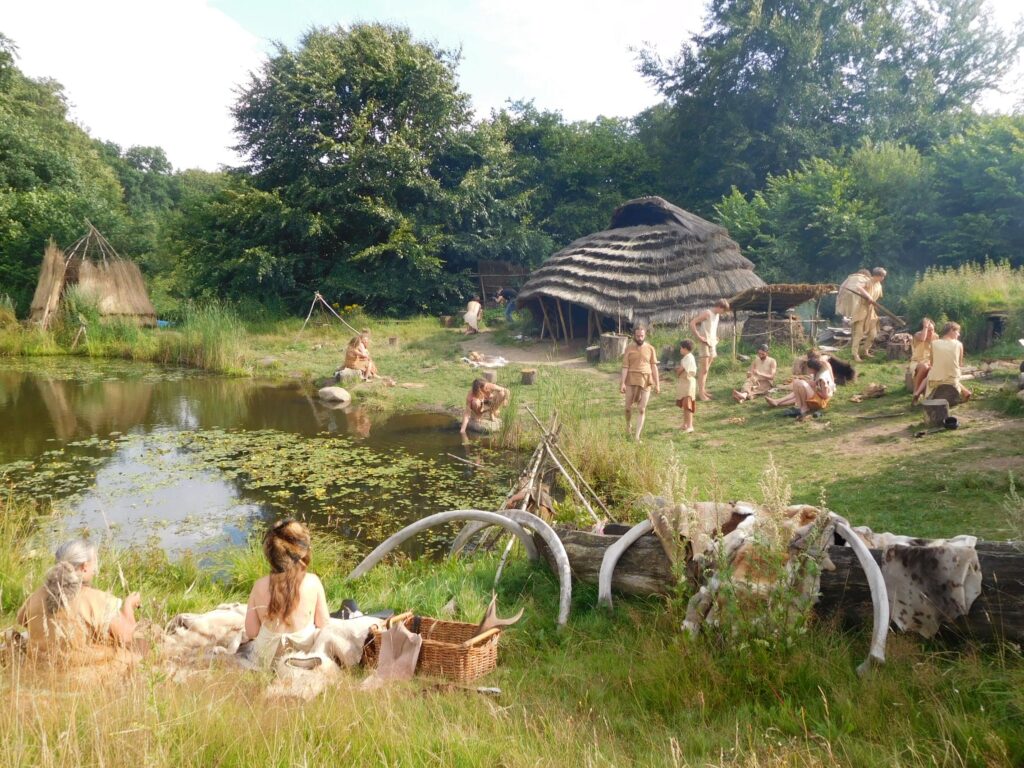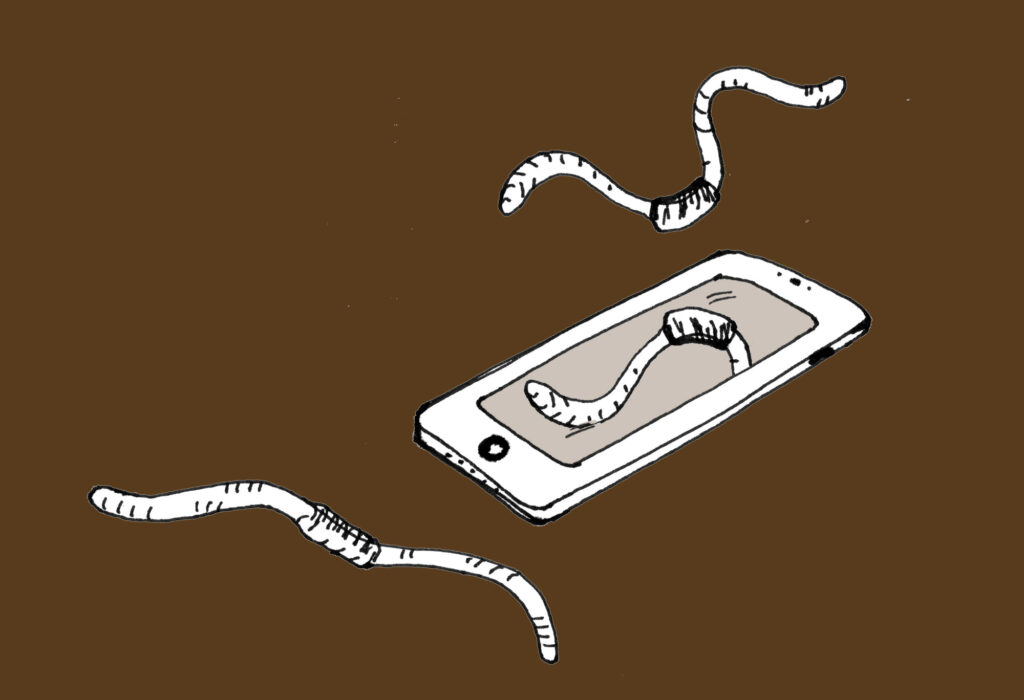WHAT IS – The Future is Plural (English Below)
Waarom zou de (nabije) toekomst eruit zien als een gepasteuriseerde computersimulatie van een nederzetting op de planeet Mars? Altijd uitgevoerd in steriel wit, zilver en pastel, voorzien van in de lucht geprojecteerde computerdata en chroma-key wallpaperdecors, gemeubileerd met zwevende en naadloze organische vormen van glas en silicone, bestuurd door vriendelijke super-AI’s en nanobots, bewoond door in strakke catsuits gestoken mensfiguren met de eeuwige jeugd, de evolutionaire opvolgers van Homo sapiens, de cyborgs van het Pre-Interstellair Antropoceen. Vanzelfsprekend 100% groen, sociaal, duurzaam, afbreekbaar en gerecycled.

Naar Mars, naar de sterren! ‘High-Tech Heaven’: het levende lichaam is balast, een tijdelijke USB-‘vleesstick’ voor virtuele data. Beeld: stockbeeld Dreamtime.
Waarom zou de (nabije) toekomst eruit zien als een scenario van schrijfster Ursula K. Le Guin, zoals zij speculeerde in de toekomstroman Always Coming Home (1985), een ‘antropologische studie’ van het Kesh-volk van Californië, lang na het ineenstorten van de westerse beschaving? Welkom in de nieuwe prehistorie, of beter gezegd ‘de posthistorie’, waar Homo sapiens zich op de onherkenbare en overwoekerde ruïnes van beton, staal en onvergankelijk plastic daadwerkelijk heeft ontwikkeld tot Neo-Neanderthalers, nomadische jager-verzamelaars die leven van het land en van wat zij kunnen maken met hun eigen handen en hun eigen spierkracht, desnoods aangevuld met de spierkracht van dieren en planten. Vanzelfsprekend 100% groen, sociaal, duurzaam, afbreekbaar en gerecycled.

Niet van de aarde af maar naar de aarde toe. ‘Living Eden’: het levende lichaam is de ultieme basis, diepgeworteld in de levende wereld en onlosmakelijk verbonden met de levende lichamen van anderen. Beeld: Exarc Leiden.
De toekomst is ongewis en zal – tenzij de menselijke soort de biosfeer onleefbaar maakt (de verschroeide aarde in Atlantis van regisseur Valentyn Vasyanovych) – waarschijnlijk een combinatie zijn van high-tech en hand-tech, van digital design en traditionele ambacht. Iets dat eenmaal is ontdekt en aangeleerd, kan weliswaar niet meer worden on-ontdekt en slechts moeizaam worden afgeleerd, maar het kan wel in een andere richting worden gestuurd.
Atlantis | Official Trailer from Grasshopper Film on Vimeo.
***
ENGLISH TRANSLATION
The Future is Plural
Why would the (near) future look like a pasteurized computer simulation of a settlement on the planet Mars? Always dressed in sterile white, silver and pastel, featuring air-projected computer data and chroma-key wallpaper decors, furnished with floating and seamless organic shapes of glass and silicone, controlled by friendly super AIs and nanobots, inhabited by tight-fittedly catsuited human figures with eternal youth, the evolutionary successors of Homo sapiens, the cyborgs of the Pre-Interstellar Anthropocene. Without saying all 100% green, social, sustainable, biodegradable and recycled.
Why would the (near) future look like a novel by writer Ursula K. Le Guin, as she speculated in Always Coming Home (1985), an ‘anthropological study’ of the Kesh people of California long after the collapse of western civilisation? Welcome to the new prehistory, or rather ‘the posthistory’, where Homo sapiens actually evolved on the unrecognisable and overgrown ruins of concrete, steel and imperishable plastic into Neo-Neanderthals, nomadic hunter-gatherers who live off the land and from all they can make with their own hands and with their own muscle strength, if necessary supplemented with the muscle strength of animals and plants. Without saying all 100% green, social, sustainable, biodegradable and recycled.
The future is uncertain and, unless the human species makes the biosphere unliveable (the scorched earth in Atlantis by director Valentyn Vasyanovych), the future will probably be a combination of high-tech and hand-tech, of digital design and indigenous craft. Once something has been discovered and learned, it may no longer be undiscovered and can only be unlearned with difficulty, but it can be steered in a different direction.
Having that said: astrophysicists who study galaxian entropy claim that at one point in time, stars and distant galaxies will be so far apart they won’t be visible from earth. Thus, future scientists shall have no way of knowing there are other galaxies in the universe. In time, data can vanish, knowledge can simply disappear and everything can be unlearned.

